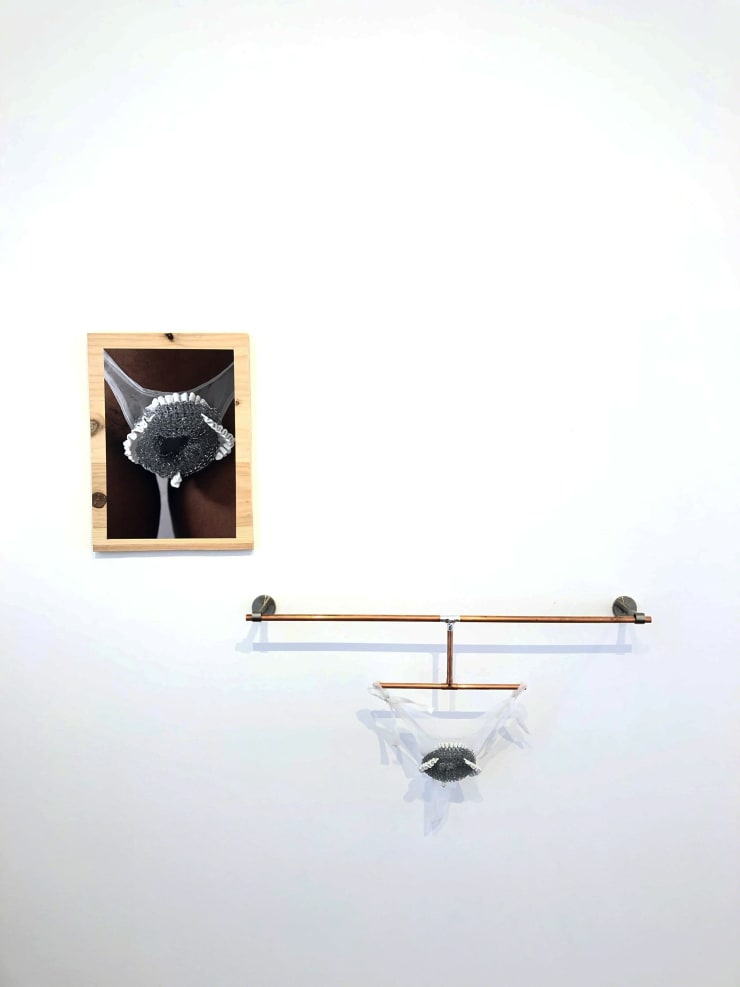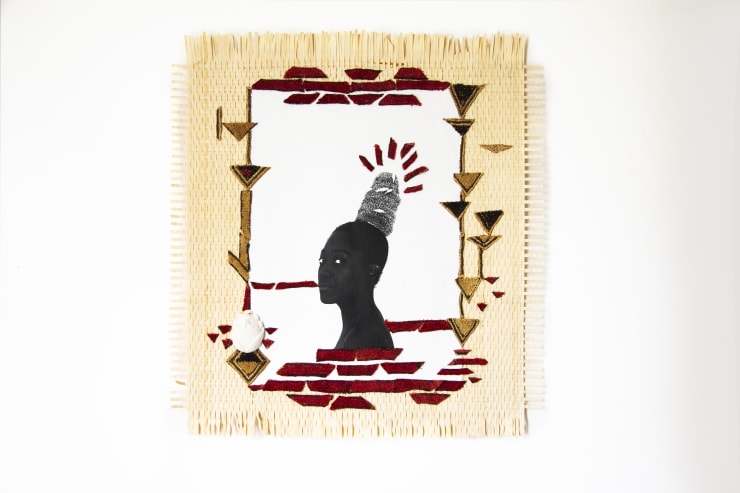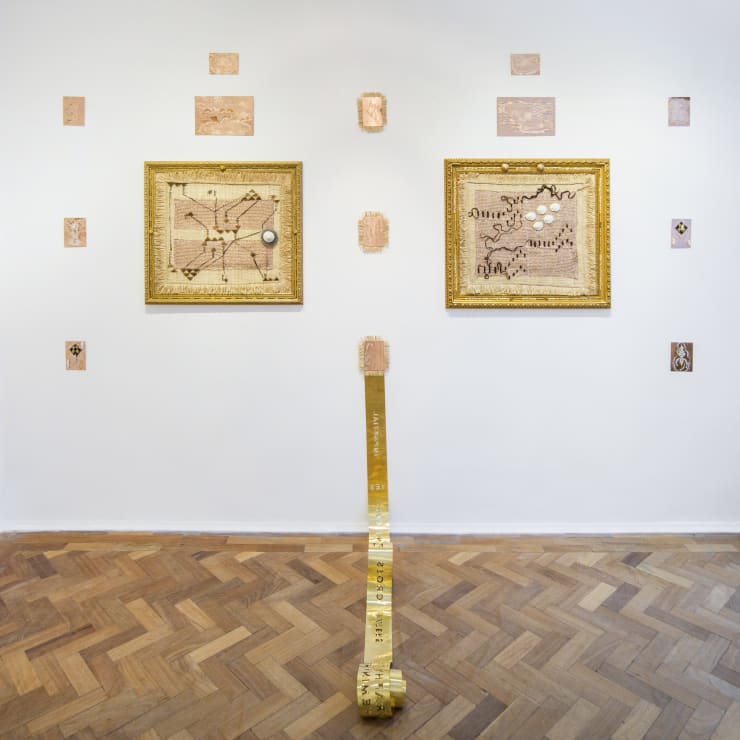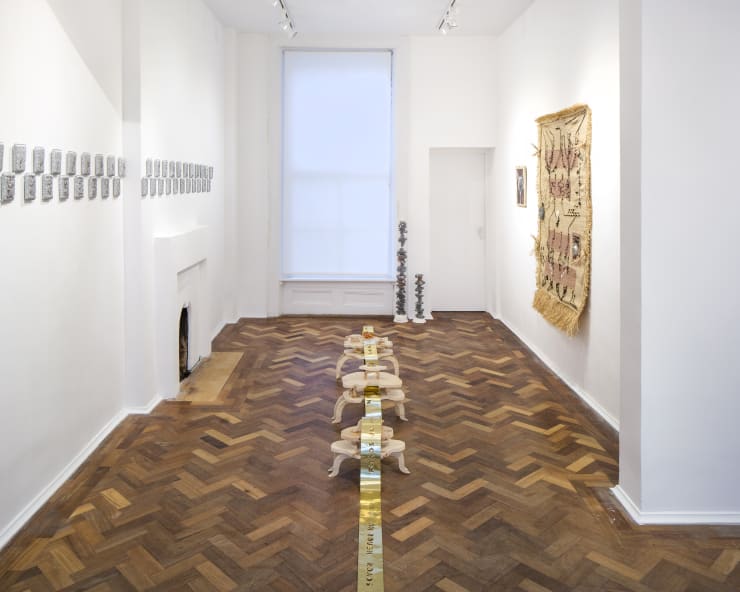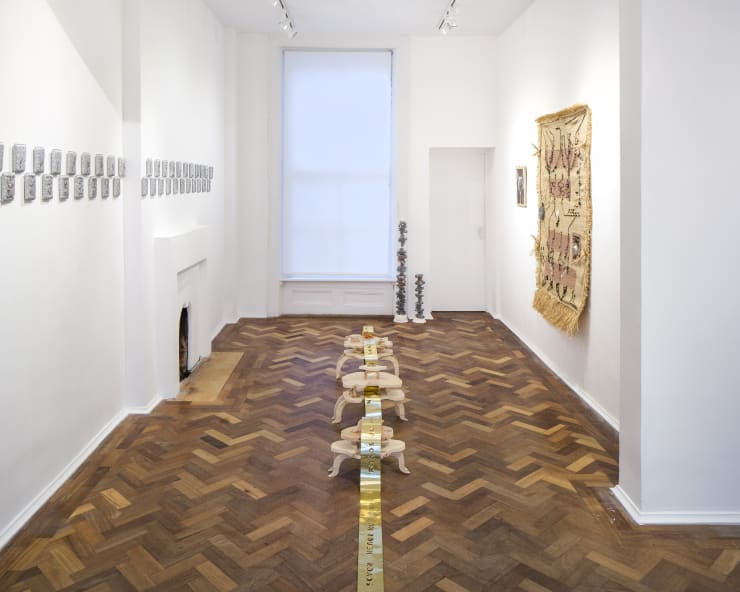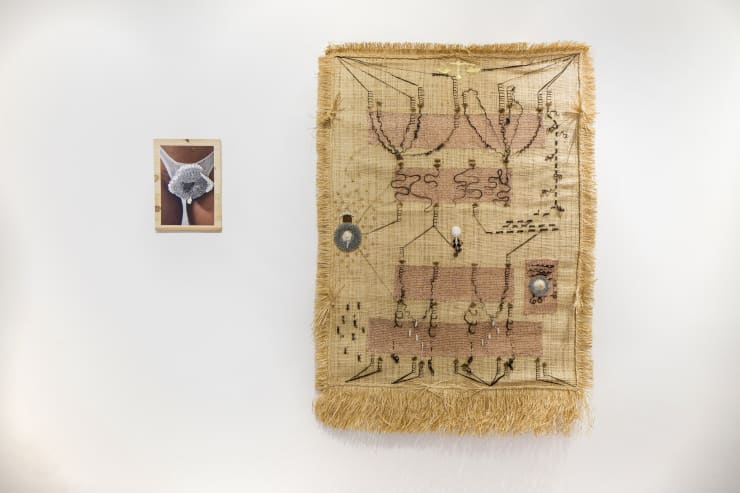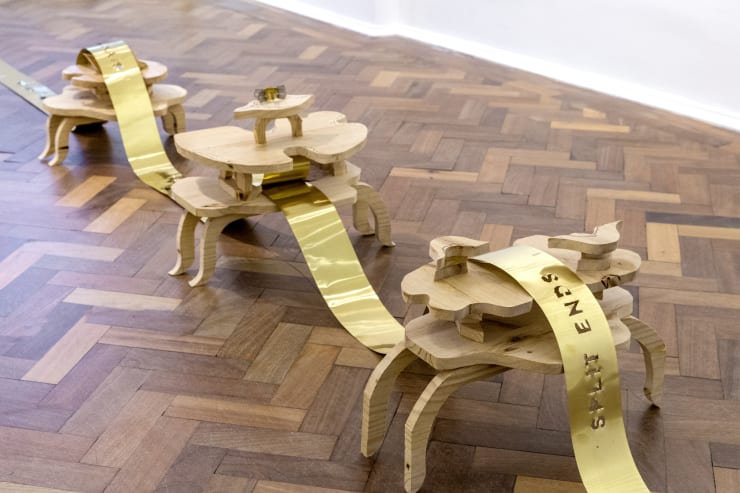Forces Field
Past exhibition
Œuvres
Vues de l'exposition
Communiqué de presse
I want to take the time of those lines to ask for a moment of suspension in order to better locate the origin of Messouma Manlanbien’s force fields, departing from the physicality of the work itself, as well as the ritualistic processes behind its making, and the potentialities that her works hold in their “exhibition” (taken as the act of presenting, showing).
From afar, the sculptures and installations of the artists seem to be made out of rather banal and composite material, with no specific texture. They look like oddly scripted coded messages. They often fool you, as they sometimes are framed in these heavy golden frames that manifest a desire to be luxurious (an exercise in class-dragging). Coming closer, piercing through their force fields (they will decide to let you in), you face a whole new cosmos. They are simili-military maps, made out of dried raffia, human hair, and scraper sponges.
The precarious geometry of these maps seems to both refer to a lost civilisation: one that’s now extinct, but also one that is yet to come. They make the bridge between a foreign past and an unknowable future – where the territory of the black female body is reconfiguring itself permanently, where the cells and its organs can still be moved, uncrystallised and mythological beings. Where the landscape is both vast and intimate, untouched grounds and unmarked skins. Surely, the forms created and unmade by the pathways and nodes of which the works are punctuated also create another alphabet for a language that escapes the coloniser’s gaze and understanding.
Hence, the first force fields of the works, their frames, are often playing with the idea of luxury and preciousness. Although they look like traditional – even classical – frames, their obvious artificiality – more gold than gold – is assumed and claimed. Messouma Manlanbien also adds subtle elements to them in order to confer them with esoteric powers (notice the small nipples). The frames, you will see, actually operate more as sources that guardian. Beyond them, constellations of elements stem out. Like waterfalls falling from the maps, their contaminate floors and walls, presenting islands forming ever-growing archipelagos.
With the help of a Senga Nengudi (with her R.S.V.P series, 1977 – ongoing) and a Joseph Beuys (with Coyote, 1974), it is crucial to understand that Messouma Manlanbien’s works are also used within performative frameworks, where wall-based works and sculptures turn into protective garments. There, they are even more loaded as force fields. For the artist, on a personal level, it is also a way to relate, more intimately, to knowledges and histories that she embodies but are so far apart geographically and historically. By re-appropriating traditional craftmaking techniques and including codes and forms from Ivory Coast’s matriarchal societies, while refusing representation of black subjects, Marie-Claire Messouma Manlanbien inscribes herself in a genealogy of emerging artists challenging the misconceptions of blackness and its embodiments, hiding while showing. Creating force fields around her and beyond.
Text: Cedric Fauq





